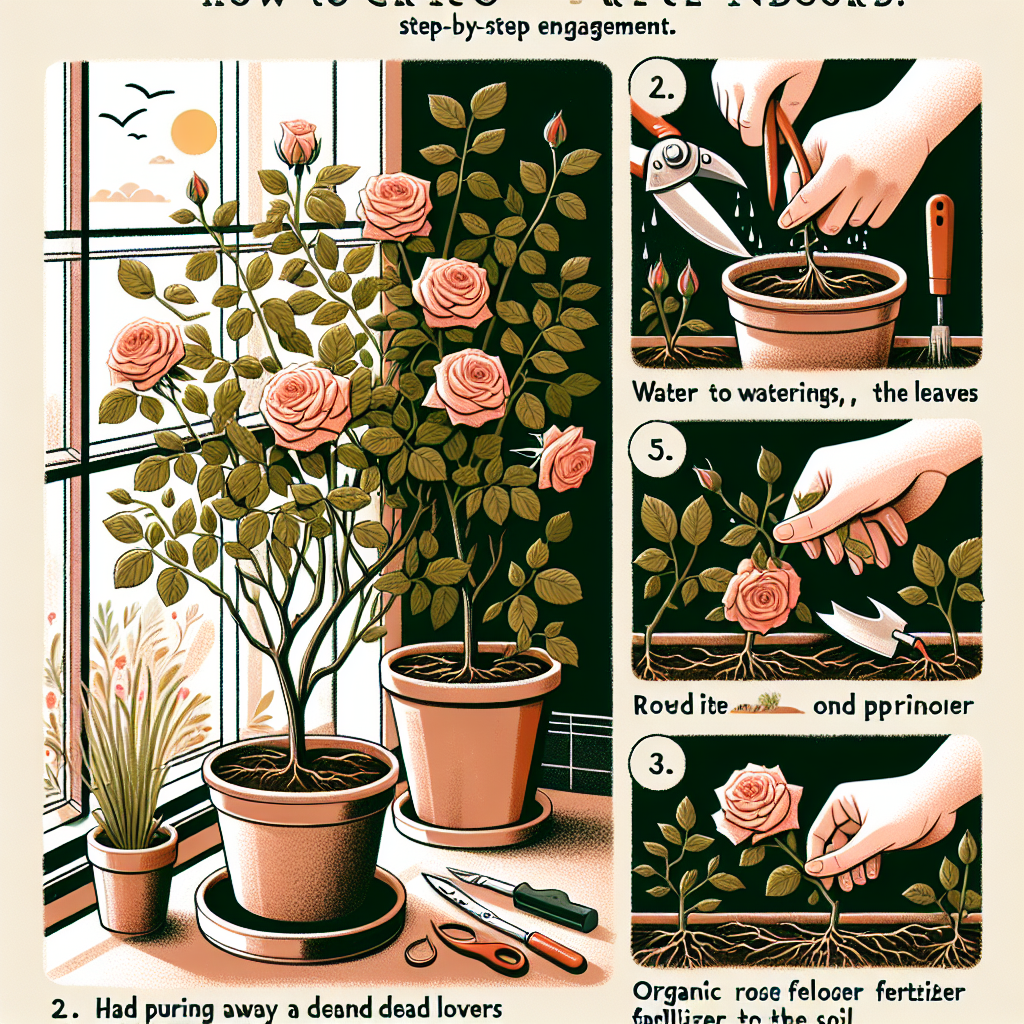
How to care for a rose plant indoors
How to Care for a Rose Plant Indoors: A Comprehensive Guide
Rose plants are a stunning addition to any home, bringing a touch of elegance and beauty. While many people associate roses with outdoor gardens, caring for a rose plant indoors is entirely feasible with the right knowledge and techniques. This guide will walk you through the essential steps and considerations to ensure your indoor rose thrives.
Choosing the Right Rose Variety for Indoor Care
Before diving into the care routines, it’s essential to select the right type of rose that can flourish indoors. Here are some popular varieties suitable for indoor environments:
- Miniature Roses: These small roses are perfect for pots and require less space.
- Potted Hybrid Tea Roses: Known for their large blooms, they're an excellent choice for serious rose lovers.
- Patio Roses: Compact and hardy, these can adapt well to indoor conditions.
Location, Location, Location: The Best Spot for Your Rose Plant
Finding the right spot for your indoor rose plant is crucial for its health and growth. Here are some tips on selecting the ideal location:
- **Light Requirements:** Roses require a minimum of 6 hours of direct sunlight each day. Position your plant near a south or west-facing window.
- **Temperature:** Keep the indoor temperature between 65 to 75°F (18 to 24°C). Avoid placing them near drafts or temperature extremes.
- **Humidity:** Indoor roses thrive in higher humidity. If your home is dry, consider using a humidifier or placing a small bowl of water nearby.
Potting and Soil: Getting the Foundation Right
The right potting mix and container are essential for a healthy rose plant. Here’s what you need to consider:
- Container: Choose a pot with drainage holes to prevent waterlogging. A size of 6 to 12 inches in diameter should suffice.
- Soil: Use a well-draining potting mix enriched with organic matter. Consider a mix specifically formulated for roses if available.
Watering Your Indoor Rose Plant
Watering is a crucial aspect of caring for your rose plant. Here are some best practices:
- Frequency: Water your rose when the top inch of soil feels dry. Avoid overwatering, as it can lead to root rot.
- Water Quality: Use room-temperature water. Rainwater or distilled water are excellent options.
- Drainage: Ensure the pot has drainage holes to let excess water escape. This helps maintain proper soil moisture levels.
Feeding: Nutritional Needs of Indoor Roses
Feeding your indoor rose plant is essential for promoting growth and blooming. Follow these guidelines:
- Fertilizer Type: Use a balanced, water-soluble fertilizer formulated for roses, or general-purpose plant food.
- Feeding Schedule: Fertilize every 4-6 weeks during the growing season (spring through summer). Reduce feeding in the fall and winter.
- Application: Mix the fertilizer with water according to package instructions and apply it during watering.
Pruning: Maintaining Your Indoor Rose Plant
Regular pruning helps maintain the shape of your rose plant and encourages new growth. Here’s how to do it:
- Timing: Prune in early spring before new growth begins.
- Tools: Use sharp, clean pruning shears to avoid damaging the plant.
- Method: Remove dead, damaged, or diseased wood. Cut back excessive growth to maintain shape.
Pest and Disease Management
Indoor roses can still fall victim to pests and diseases. Familiarize yourself with common issues and their solutions:
- Aphids: Small green or black insects that can sap the plant's strength. Use insecticidal soap or neem oil to treat them.
- Spider Mites: Tiny spider-like pests that thrive in dry conditions. Increase humidity and spray with water to dislodge them.
- Powdery Mildew: A fungal disease that causes white powdery spots. Ensure good air circulation and don't overcrowd your plants. Treat with a fungicide if necessary.
Flowering and Deadheading
To encourage continuous blooms, deadheading – removing spent flowers – is crucial. Here’s how to do it:
- **Identify Spent Flowers:** Look for flowers that are fading or have dried out.
- **Cut:** Make a clean cut just above a healthy leaf or bud to encourage new growth.
- **Frequency:** Regularly check and deadhead your roses to keep them blooming throughout the season.
Winter Care for Indoor Roses
Indoor roses may need special attention during the winter months. Here are some tips:
- Reduce Watering: Soil will dry out more slowly in winter; water less frequently.
- Limit Fertilization: Stop fertilizing as the plant enters a dormant phase.
- Light Exposure: Ensure they still receive adequate light during shorter days. Supplement with grow lights if needed.
Encouraging Repeat Blooms
To keep your indoor rose plant blooming, consider these strategies to encourage repeat flowering:
- Consistent Care: Keep a steady routine of watering, feeding, and pruning.
- Pinching Back: Pinch back new growth to encourage bushier plants and more blooms.
- Remove Weak Shoots: Focus energy on strong stems by removing weak ones.
A Final Word on Caring for Indoor Roses
With the right care and attention, indoor rose plants can thrive and offer breathtaking blooms year after year. Remember to provide adequate light, water appropriately, and be vigilant against pests and diseases. Caring for a rose plant indoors can be one of the most rewarding gardening experiences, bringing joy and beauty inside your home.
“A rose by any other name would smell as sweet.” – William Shakespeare
By following the guidelines above, you can enjoy a gorgeous indoor rose plant that showcases its vibrant blooms for all to admire. Happy gardening!
```By Guest, Published on August 22nd, 2024